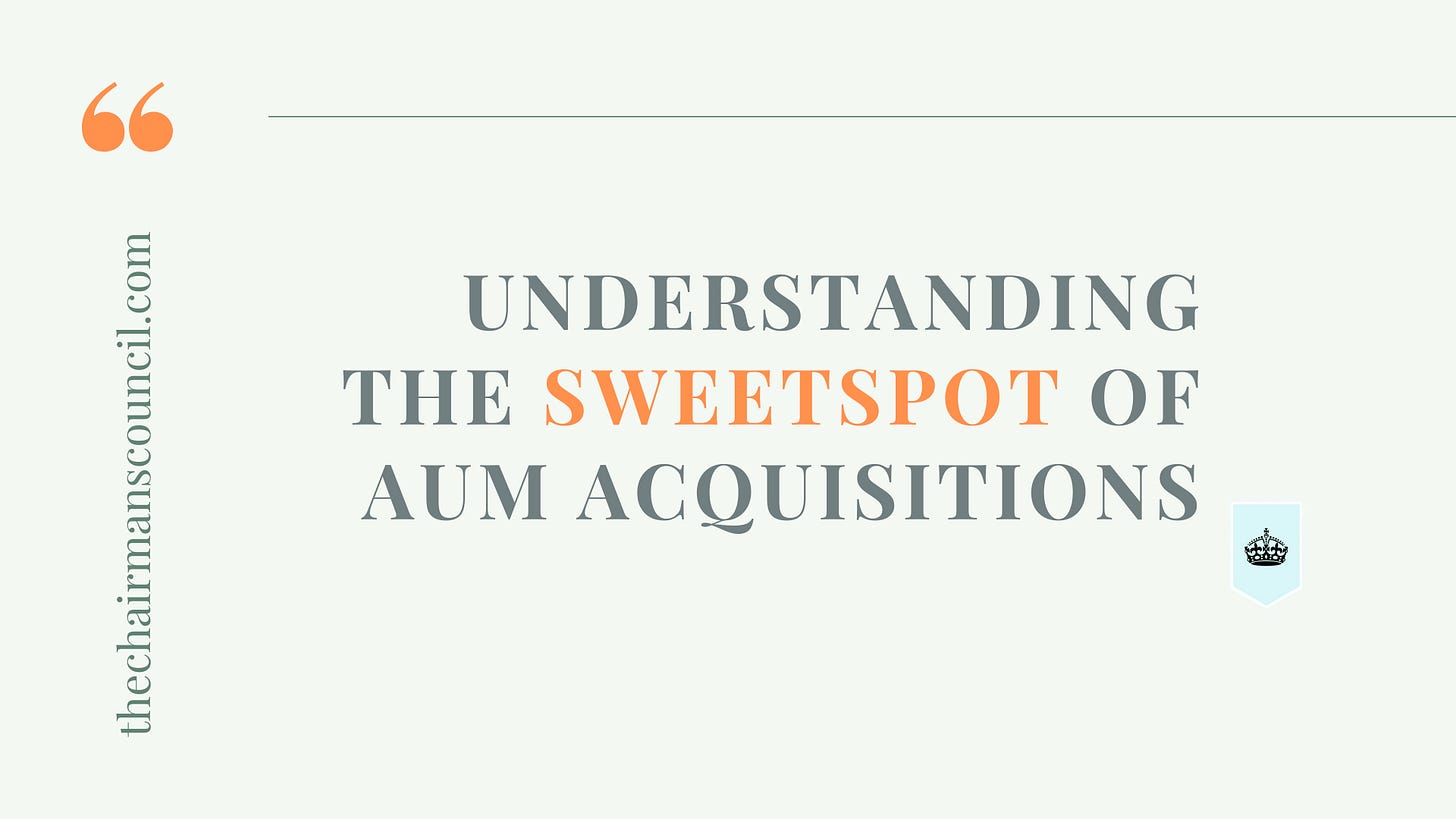Mastering the Sweet Spot of AUM Acquisitions
There’s no disputing the power of a single large acquisition to propel your business to new levels. Many see it as risky - But that risk can be abated, and 90% to 97% retention success is achievable.
Whether buying or selling AUM, it is important to understand what goes into valuation of AUM.
A major factor in determining the valuation of AUM is the underlying structure of the practice, this will also help to establish who the likely potential buyers or sellers are.
Generally across the industry there are four common ownership structure
Advisor Books
Independent Advisory Practices
Businesses
Firms
What’s the difference? The simple way to look at this, is that the first - Advisor Books, are typically Advisors that are part of a larger broker dealer or Financial Planning platform. The second - Advisory Practices are partnerships or independent fee Advisories. I would suggest that #3 - Businesses would most aptly be related to independent Advisors unaffiliated with a larger firm, these are typically the small RIA practices. And the fourth - Firms, are platforms of multiple Advisors.
Do not Value AUM using a multiple of revenue
While many Advisors may assess the value of AUM by simply appl…


